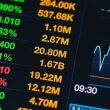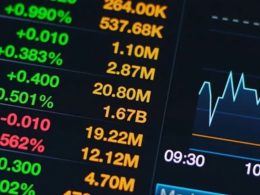by Jurrien Timmer, Director of Global Macro, Fidelity Investments
Key takeaways
- The Omicron variant unnerved investors as fears of economic disruption resurfaced.
- It is too early to tell if Omicron will unfold as Delta did.
- At this point, it's unlikely that Omicron will cause the Fed to shift gears from its previously telegraphed plans.
One of the reliable seasonal tendencies is for stocks to rally on the day after Thanksgiving, in what could be seen as a down payment for the Santa Claus rally (when the market tends to rise during the last week of December and into the first couple days of the new year). Needless to say, that didn't happen last week, as news of the Omicron COVID-19 variant threw the markets into disarray.
Now, we have to wait to find out if it will spread broadly, whether existing vaccines are effective against this new strain, and to what extent it might cause a renewed wave of restrictions. Even before this new variant, the decline in hospitalizations from the Delta variant appeared to have run its course. Now that winter is almost here, Omicron presents another risk for investors to carefully monitor.
Is Omicron different?
What can we infer about a potential wave of new infections from a possible spread of the Omicron variant? Looking back at the Delta variant wave, that did not lead to renewed lockdowns in the US (see US lockdown index vs. hospitalizations chart), for example. But markets are understandably concerned that this might change if it turns out that a new vaccine needs to be developed.
Volatility spiked on Friday, November 26, as one would imagine. However, the increase in the CBOE Volatility Index (VIX), a commonly used measure of stock market volatility, does not seem different, at this point, from the many short-lived scares that we have experienced over the past 20 months (see Volatility chart).
For the stock market, the Omicron news threw cold water on what had been a steady march to new highs. Looking at things through a long-term lens, the chart damage seems minimal so far. On a very short-term basis, market breadth is already getting oversold, with just 21% of stocks in the S&P 500 trading above their 20-day moving average (see S&P 500 technicals chart).
Will this new variant alter the Fed's path?
An indicator for how Omicron might impact markets over the short term is how the Fed appears to be digesting information. The rates market was very quick to unprice some of the Fed's expected normalization path (tapering asset purchases and raising interest rates). The chart below shows the fed funds curve from Friday, November 26 in the dark blue line, and the curve from Friday, November 19 in the green line.
In my view, a lot more needs to happen to financial conditions before the Fed will change its policy trajectory. I don't think Friday's action was enough to slow the Fed down in terms of the taper or its projected rate hikes (both are measures that will withdraw some of the economic support provided by the US central bank).
For the Fed and the markets alike, it will be interesting to see if the current scare will pour cold water on the "inflation-isn't-transitory" narrative. My guess is that this scare will be short-lived enough to not change the inflation narrative. With shipping container rates now reversing lower, perhaps the annual rate of change in the CPI has finally peaked at 6.2%. These factors could impact the Fed's next moves.
Will emerging markets bear the brunt of Omicron?
Historically, 2 of the most consistent indicators for emerging market (EM) stock market performance have been financial conditions indexes, which provide insight into an economy’s money markets, debt, and equity markets, and CRB Raw Industrials Index, which measures commodity performance. They have both performed in stellar fashion this year, but it has not been enough to lift the performance for EM equities.
The damage on Friday hit emerging markets hard, continuing a disappointing EM story in 2021 (mostly as a result of China's growth recession). Omicron has made its presence felt in South Africa mostly to this point, and while there is no telling if and how far it could spread, its rise in a prominent emerging market does no favors for this group.
Investing implications
Earnings will continue to be the primary driver for stocks over the short and long term. Omicron just adds another layer of complexity to the COVID problem for investors. For now, we are in a wait-and-see mode in regards to Omicron.
About the expert

Jurrien Timmer is the director of global macro in Fidelity's Global Asset Allocation Division, specializing in global macro strategy and active asset allocation. He joined Fidelity in 1995 as a technical research analyst.













